The OneOdio A10 is the current mid-range wireless ANC headphones that the manufacturer has to offer and yes, it’s a new device, not the same A10 that was released two years ago. Well, it’s not really an overall improvement over the previous A10 because we still get the same 40mm drivers, the hybrid ANC (plus the two ANC microphones per earcup – feedback and feedforward) and the A10 still supports Bluetooth 5.0.
| OneOdio A10 | |
|---|---|
| OneOdio.com | Check Offer |
| Amazon.com | Check Product |
So, what’s new? The design is slightly altered since the earcups are now covered by silver metallic plates, the battery has seen an increase to 800mAh (from 750mAh) and there is now support for the multi-point connection. I know Sony postponed adding this feature up until the fourth generation of ANC headphones (on its WH-1000XM4), so seeing it on a fairly inexpensive pair of headphones is a fantastic feat.
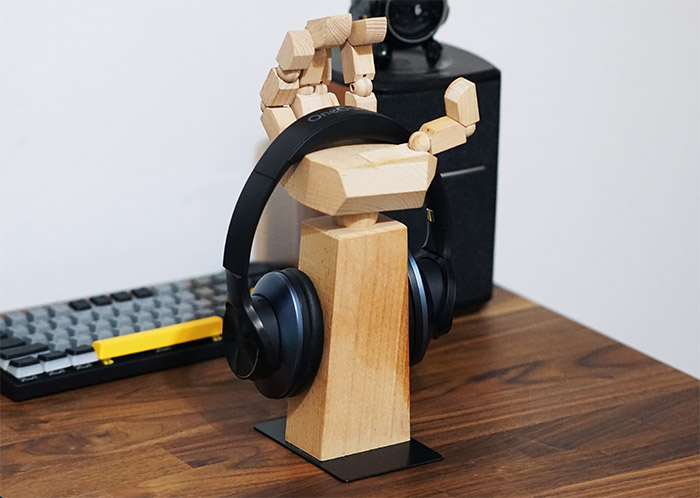
I don’t think that there are any changes from the sound quality point of view, but we will put that to the test, as well as the ANC tech. I have some familiarity with OneOdio’s implementation of ANC from when I tested the A30 and it did alter the sound quality a bit, something that’s common with ANC headphones in this price range, so I am curious to see if there are any notable improvements in this regard as well. That being said, let’s put the OneOdio A10 to the test and see if it’s worth getting it over other similarly price options.
Build Quality and Design
The build quality of OneOdio headphones has always been above average and even in the case of the A30, even if there were some shortcomings, overall, it was a solid pair of headphones. The upgraded version of OneOdio A10 is even better, sporting much more metal than what I saw on all of its siblings in the same price range. Even more than the Monitor 80 which retails for much more. Indeed, part of the outer shell of the earcups is metallic and when paired with the smooth movement of the headband expansion, this gets as close as possible to premium build quality.
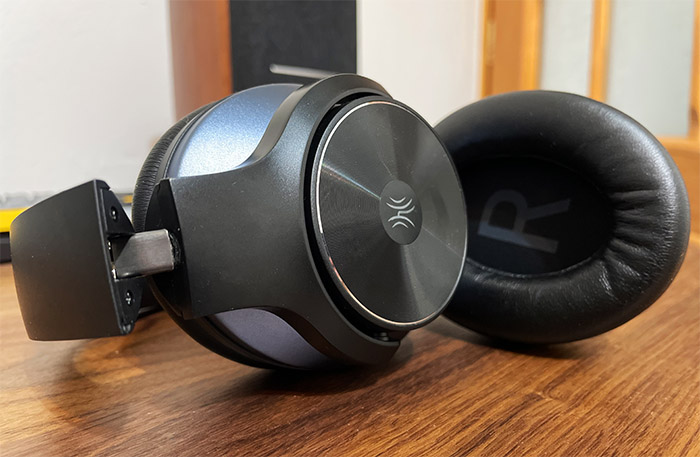
I would go as far as to say that it feels better than the Sony WH-1000XM5 and I am not even going to mention the previous two generations of headphones, because it was all creaky plastics. There is some plastic here as well. The circular area for the buttons and the contact points with the arm are made of plastic, but going a bit above, we see that the foldable hinges are actually metallic which again, puts Sony to shame. You can still build a decent pair of headphones using mostly plastic, as seen with the Tronsmart Apollo, but again, some metal will enhance the look and feel of any device.
The rest of the headband is made of plastic and the pad is very thick and soft but, it’s not as wide as I would have liked. I don’t have a big head, just an average male head and even so, besides getting in contact with the soft headband, I also feel the two plastic borders. If we take the OneOdio Monitor 80 as an example, we can see that the headband covers way more space, making it impossible for the plastic to push on any side of the head.
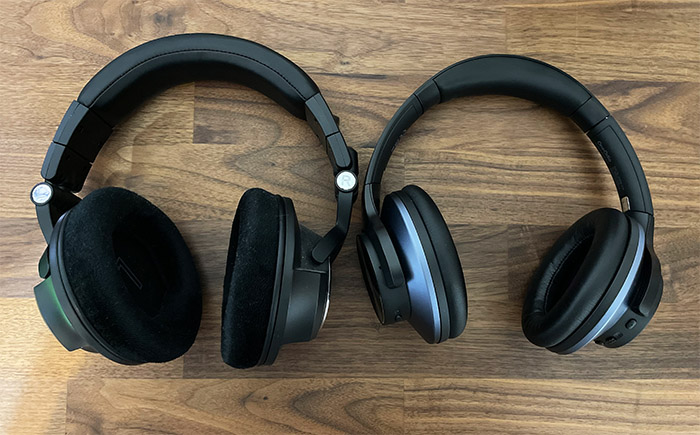
That’s why I can keep the Monitor 80 for hours with no fatigue, but the OneOdio A10 will require constant breaks from listening to music. About the earcups, they’re not too tight and form a proper seal around the ears even if the cushions aren’t very large. Still, if my ears were able to be covered, then there is nothing to complain about in this case. The material that OneOdio chose is faux leather which makes them suitable for most conditions, but what about while working out.
Your ears are going to sweat a lot since there is little ventilation and the seal is there for ANC. As for the controls, the OneOdio A10 Hybrid headphones has the volume up and down on the right earcup with the Power button in the middle. It does have more functions than that because it will also work for Pausing or Resuming a track, to pair via Bluetooth, answer or hang a call, so pretty much the entire spectrum of functions. Kind of, because the Volume Up and Down buttons will also serve as ‘move to next or previous track’ buttons, you just need to press and hold them for a second.
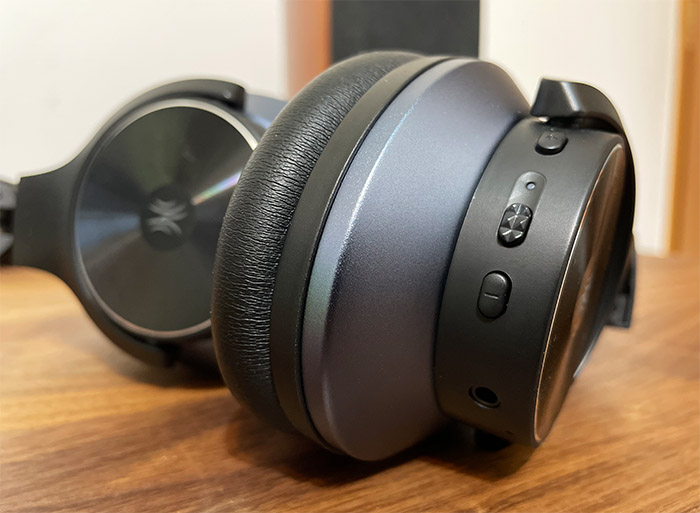
Still on the right earcup, there is an Aux port in case you want to connect the headphones directly to the source, bypassing the wireless function. And they have put a cable for the 3.5mm jack inside the package. Moving to the left earcup, this one has a USB-C port for charging up the inner battery and next to it, there is an ANC button with an LED that shows the status of the battery. If it’s red, then the battery needs recharging, otherwise, it’s going to stay solid blue.
Internal Hardware and Connectivity
Just like the original version, the OneOdio A10 uses 40mm drivers with 32 Ohm (+/-15%) impedance, so you don’t need a dedicated amplifier to push these headphones to the maximum potential. Your phone and laptop will be more than enough. And that was obvious from the start considering that the main way to connect the OneOdio A10 is via Bluetooth. There is support for Bluetooth 5.0 which is fine since the newer version don’t really bring anything in terms of coverage.
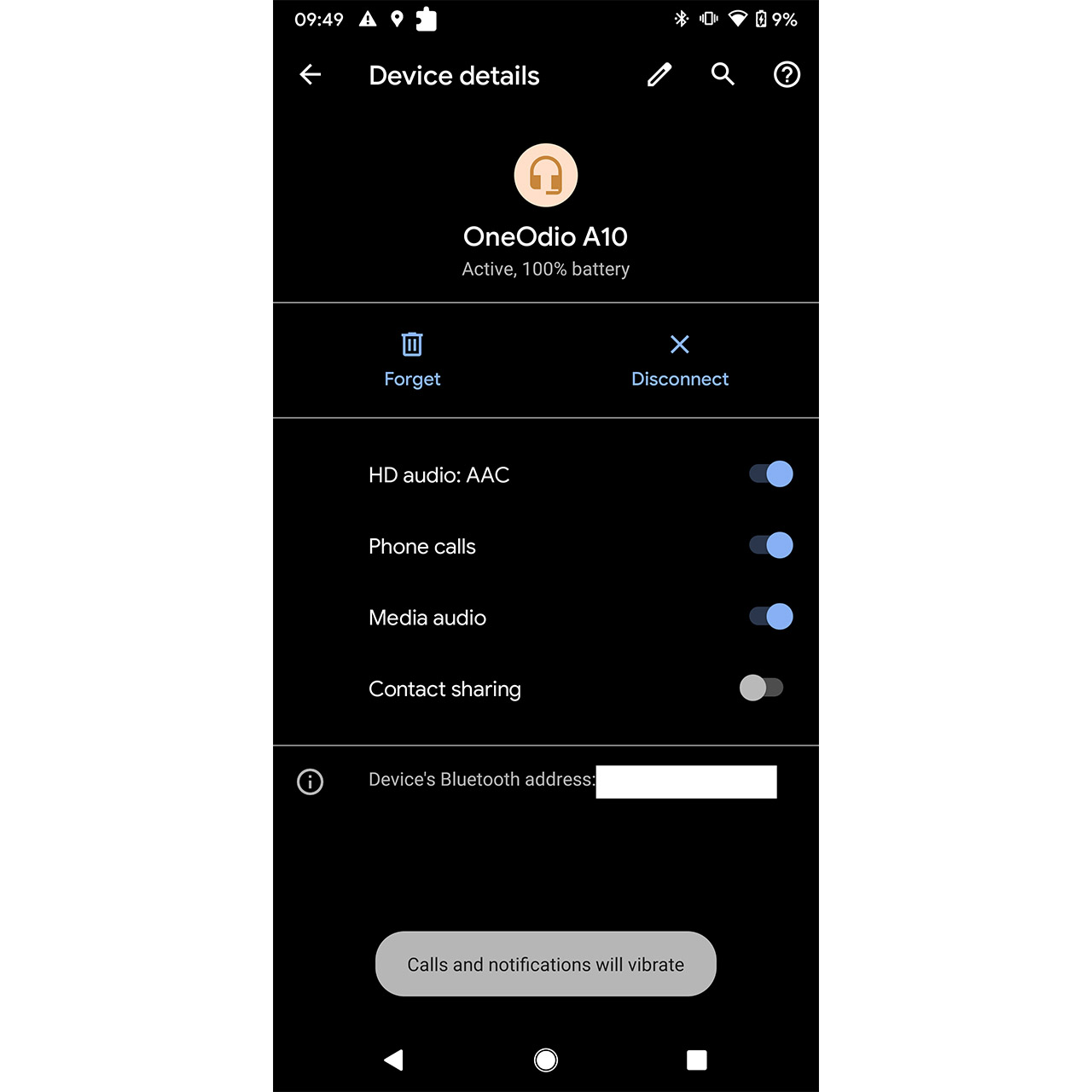
You can still go as far as 30 feet without line of sight before the connection starts to become unstable. As for codecs, there is support for SBC an AAC (as shown by a Pixel 2 XL), so you can listen to high quality audio via Bluetooth (kind of), but things can be entirely different with a cabled connection. We’ll see in a minute. I do need to mention the support for Bluetooth Multipoint which is a rarity at this price point, and it allows you to connect the OneOdio A10 to two separate devices at the same time.
Bluetooth Multipoint
Since it’s so rare to see support for Multipoint not only on budget-friendly headphones, but even on the more expensive ones, people don’t really know that there can be some nuances on how this technology can be implemented. Some manufacturers allow only the connection of two phones, other support both phones and computers. I did try connecting the OneOdio A10 to both an iPhone and a Desktop PC, and it worked just fine. The process is quite simple.
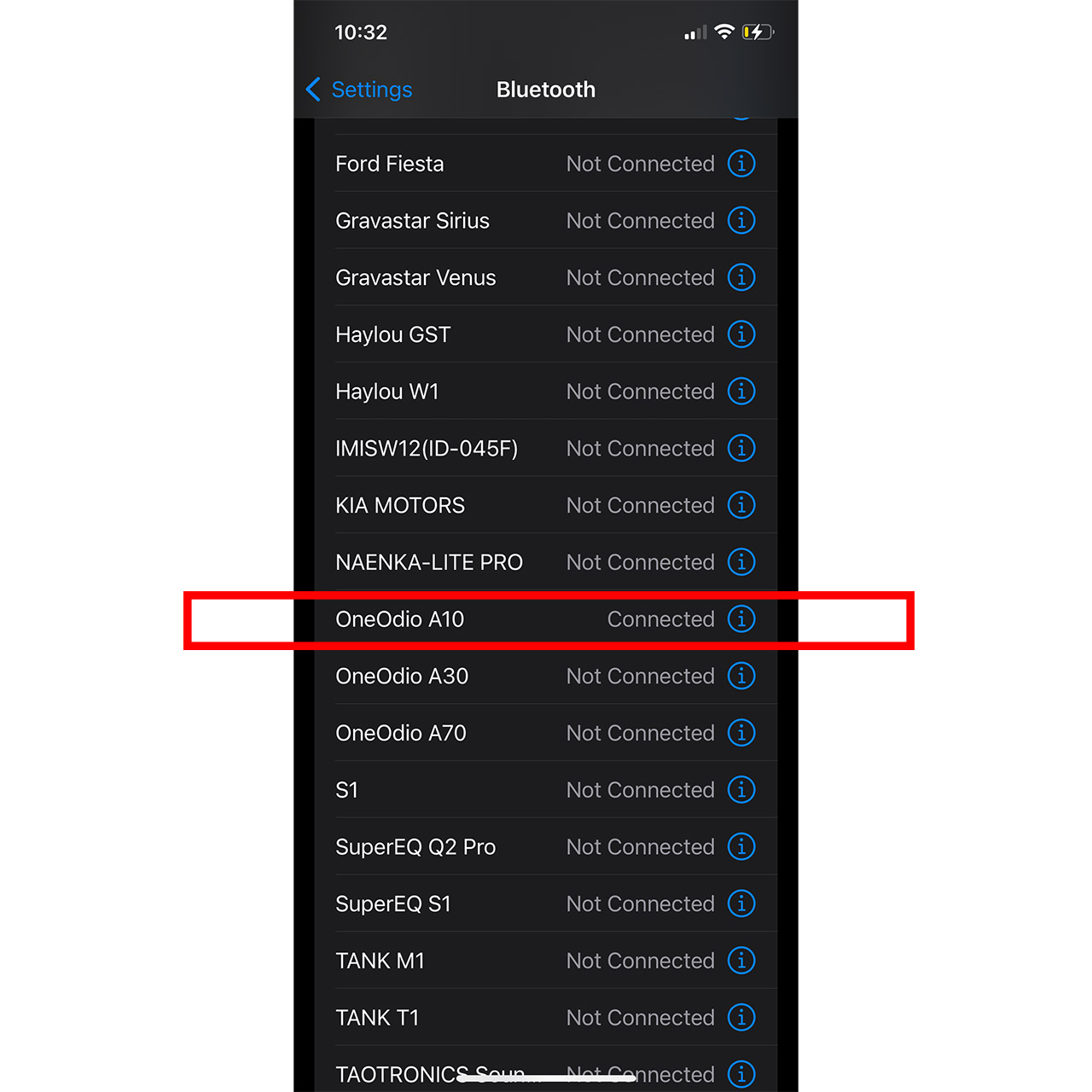
I first paired the headphones to the phone (as I would with any other Bluetooth device) and then I turned off the Bluetooth. Afterwards, I paired the OneOdio A10 to the PC and then I re-enabled Bluetooth on the phone. I then checked the list of paired devices and tapped on the headphones which now showed that the OneOdio A10 was indeed connected to the iPhone, as well as to the PC. Don’t expect to be able to stream music from both sources because it’s not going to work.
The concept is based around priorities. I could stream music from my PC, but, as soon as I wanted to make a call (or receive one), the headphones automatically switched to the phone. This is also available for notifications. One source can stream music, the other will let you know from time to time that you got an important email (or any other notification). It doesn’t always work perfectly though because there are times when even if the A10 was connected to a device, the sound will not come through and I had to manually disconnect and reconnect it to make it work again.
ANC Performance of the OneOdio A10
It is tempting to compare the OneOdio A10’s ANC performance with that of Sony WH-1000MX3 even if it’s far from fair, but it is pretty much the pinnacle of what can be achieved. So, to keep things balanced, I will compare it to the Tronsmart Apollo which I consider to be one of the best performers in the budget-friendly headphones segment.
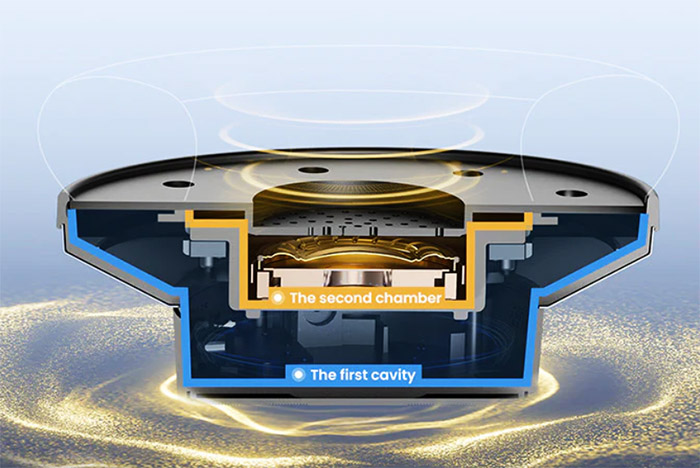
After enabling ANC on the OneOdio A10, I could immediately tell that it is better than on the A30 and it’s very similar to the Apollo. The passive sealing does have an important role, but you can tell that the world gets more silent after enabling the ANC On mode. One of the main reasons why ANC was developed was to limit the impact of engine noise on aircraft pilots and then it became a standard for people that travel long hours by plane. So, can the OneOdio A10 negate the droning noise?
You’ll still hear the engine, but with less than half the intensity. I also live very near a heavily trafficked area and the cars from outside could no longer be heard after I enabled the ANC mode. Also, any other fan (from network switches, NVR and UPS) got completely canceled. What about higher frequency sounds? You’ll still be able to hear them, just at a slightly lower intensity. So, if someone is talking to you, you’ll hear them if they’re close enough.
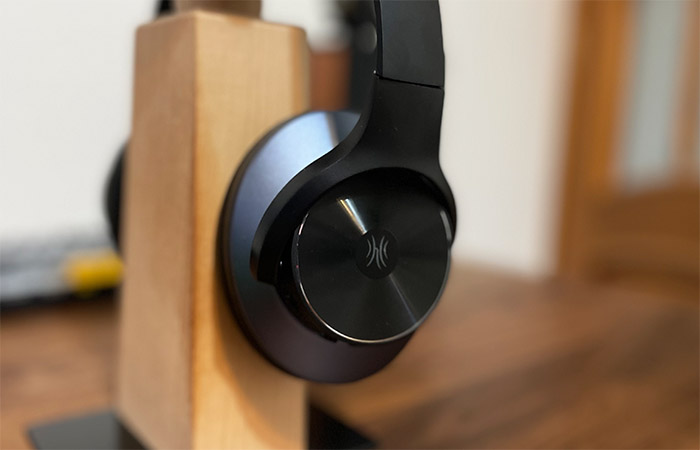
If you’re in a coffee shop, if there are lots of people, the headphones won’t be able to cancel the nearby voices, but it can do a good job for those farther from you. So, overall, it’s kind of similar to the Tronsmart Apollo. Obviously, there is no hissing sound, but I do blame a slight pressure which may annoy some people that are more sensitive.
Sound Quality
As with any other pair of headphones, I first ran a driver quality and driver matching test to see if everything is in order from a more ‘technical’ point of view. The driver quality test check if there is any buzzing when listening to the sweeping tone that goes from low to high frequencies. And the tone sounded surprisingly clean with very minor buzzing at lower frequencies. Next, the driver matching test shows that the target is to keep the sound in the middle, without any deviation and the OneOdio A10 was able to accomplish this task without problems.
Afterwards, I listened to some binaural recordings to get an idea about the sound signature of the OneOdio A10. I could immediately tell that there is a slight boost in the bass and treble frequencies, while the mids are a bit recessed (that mainstream V-shaped sound signature). And yes, the sound is not as detailed as on the Monitor headphones which was to be expected. Also, the instrument differentiation is not that clearly accomplished, so no, we’re clearly not dealing with a high-fidelity pair of headphones for audiophiles, which was obvious from the getgo.

With ANC off, I noticed that the soundstage is a bit narrow, but I could still tell where every singer and instrument player was positioned (so the imaging is good). With ANC on, the dominant sounds get into focus, while everything that is slightly recessed, getting pushed together in the background, so there is a loss in clarity, but a strange increase in colorfulness. I then moved to the tracks themselves and I first listened to Zhu – Faded to check that low bass. With ANC on, the bass is slightly boosted but it also lacks in substance.
With ANC off, it does bring life back to the bass which becomes has a lot more impact than before. Moving on to the mid-bass-focused Morph The Cat by Donald Fagan and, with ANC on, it seems that the bass is less affected, so the song sounds relatively the same with ANC on and off, although the former does seem to produce a brighter sound, again. System Of A Down – Mr Jack is a very busy and complicated song which does have a tendency of sounding muddy if the headphones can’t properly differentiate between instruments and voices. And this was a surprise because the OneOdio A10 managed to handle the song fairly well.
The one particularity that I noticed is how the voices sounded very close to my ears, but without any loss in clarity. At the same time, the instruments are not very clearly defined, but overall, it’s still a pleasant experience unless you’re searching for audiophile level of performance which the A10 can’t provide.
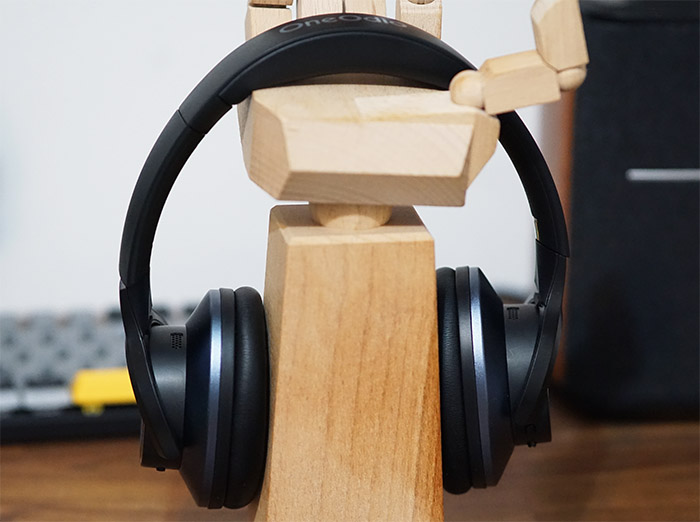
With ANC on, the bass gets recessed, and some details are lost. The song Déjà Vu Affair by Sofi Tukker showed that the female voice is slightly forward and just like with MR Jack, the voice is very close to the ears, so the instruments take a second place. Moving on to the mids, I listened to She Burns by Vance and it seemed that my ears were the singer’s microphone, so yes, it’s an intimate experience, not the most accurate, nor the most detailed, but satisfying, nonetheless. With ANC off, you get to experience the bass a bit more which adds a new dimension to the song.
Listening to Breathin by Ariana Grande, I noticed that again, the voice is the star of the show, with the instruments taking a second place; the song is colorful, but not too bright and yes, ANC does alter the song negatively. ‘Guns n Roses – Sweet Child o Mine’ shows that the treble is clearly boosted and, with ANC on, the clarity and details are out the window. You do get more fidelity with ANC off. I do need to mention the Transparency mode which amplifies the external sounds and lowers the volume of the track you’re listening to, so it does have an impact on the sound quality, but it can be useful in certain situation (outdoors).
Call Quality
I noticed that the headphones have gotten better at handling the call quality since it is an important aspect that a lot of people take into account.
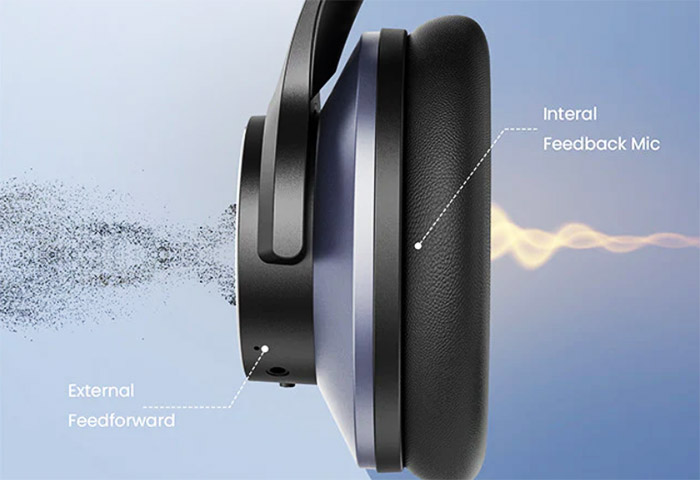
It’s very annoying to take the phone out and put the headphones down when you can just click a button and answer the call. As for the call quality itself, I was able to hear the other person clearly even if there was some noise around me (cars passing by). The person on the other end did complain that my voice wasn’t as clear when I was near a highway, but in normal conditions, including a city street, it’s going to be fine.
Battery Life
The manufacturer says that the 800mAh battery should last for 35 hours if you’re using Bluetooth and ANC at the same time, 40 hours with ANC off (BT on) and 50 hours with just ANC. I did some tests of my own and with BT and ANC, I did have to recharge the battery after about a day and a half; with ANC on, I did see an increase of about 4 hours, so while not perfectly accurate, these advertised values are close to reality. Be aware that the moment you connect the USB-C cable for recharging, the headphones will turn off so no chance of listening via Bluetooth at the same time.
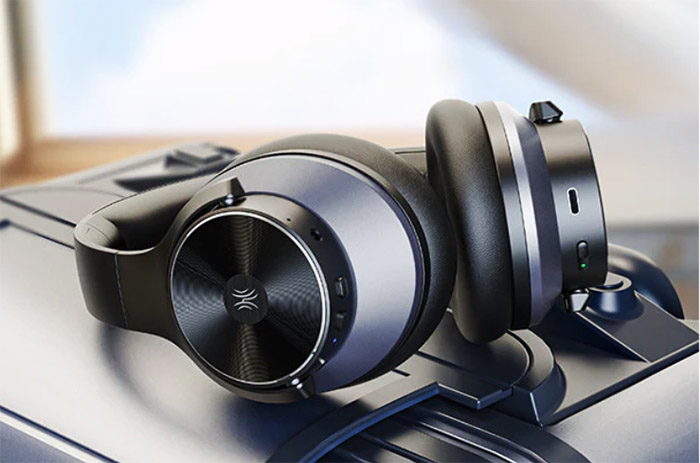
The Conclusion
I admit that I had second thoughts about what seemed like a re-launch of the same pair of headphones, but, while it’s true that not much has changed in regard to the sound quality, some improvements have been made. And for people that want Bluetooth Multipoint support, then the OneOdio A10 is one of the few to offer it in its current price range. The bump in battery capacity was a bit shy, but it’s still there so, while I would not upgrade from the original A10, the improved version does have a better standing against its main competitors.

Mark is a graduate in Computer Science, having gathered valuable experience over the years working in IT as a programmer. Mark is also the main tech writer for MBReviews.com, covering not only his passion, the networking devices, but also other cool electronic gadgets that you may find useful for your every day life.

